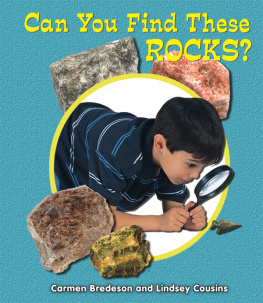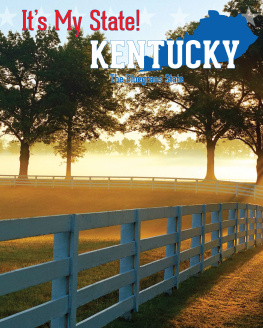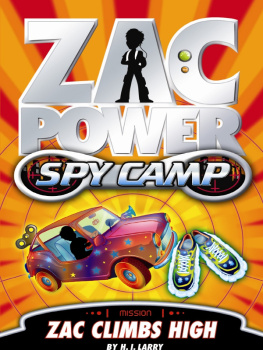Bob Gaines - Best Climbs Tahquitz and Suicide Rocks
Here you can read online Bob Gaines - Best Climbs Tahquitz and Suicide Rocks full text of the book (entire story) in english for free. Download pdf and epub, get meaning, cover and reviews about this ebook. year: 2013, publisher: RowmanLittlefield, genre: Home and family. Description of the work, (preface) as well as reviews are available. Best literature library LitArk.com created for fans of good reading and offers a wide selection of genres:
Romance novel
Science fiction
Adventure
Detective
Science
History
Home and family
Prose
Art
Politics
Computer
Non-fiction
Religion
Business
Children
Humor
Choose a favorite category and find really read worthwhile books. Enjoy immersion in the world of imagination, feel the emotions of the characters or learn something new for yourself, make an fascinating discovery.

- Book:Best Climbs Tahquitz and Suicide Rocks
- Author:
- Publisher:RowmanLittlefield
- Genre:
- Year:2013
- Rating:4 / 5
- Favourites:Add to favourites
- Your mark:
- 80
- 1
- 2
- 3
- 4
- 5
Best Climbs Tahquitz and Suicide Rocks: summary, description and annotation
We offer to read an annotation, description, summary or preface (depends on what the author of the book "Best Climbs Tahquitz and Suicide Rocks" wrote himself). If you haven't found the necessary information about the book — write in the comments, we will try to find it.
Bob Gaines: author's other books
Who wrote Best Climbs Tahquitz and Suicide Rocks? Find out the surname, the name of the author of the book and a list of all author's works by series.
Best Climbs Tahquitz and Suicide Rocks — read online for free the complete book (whole text) full work
Below is the text of the book, divided by pages. System saving the place of the last page read, allows you to conveniently read the book "Best Climbs Tahquitz and Suicide Rocks" online for free, without having to search again every time where you left off. Put a bookmark, and you can go to the page where you finished reading at any time.
Font size:
Interval:
Bookmark:



Copyright 2013 Morris Book Publishing, LLC
ALL RIGHTS RESERVED. No part of this book may be reproduced or transmitted in any form by any means, electronic or mechanical, including photocopying and recording, or by any information storage and retrieval system, except as may be expressly permitted in writing from the publisher. Requests for permission should be addressed to Globe Pequot Press, Attn: Rights and Permissions Department, PO Box 480, Guilford, CT 06437.
FalconGuides is an imprint of Globe Pequot Press.
Falcon, FalconGuides, and Outfit Your Mind are registered trademarks of Morris Book Publishing, LLC.
Maps: Alena Joy Pearce Morris Book Publishing LLC.
All interior photos by Bob Gaines unless otherwise noted.
Text design: Sheryl P. Kober
Project editor: David Legere
Layout: Sue Murray
Library of Congress Cataloging-in-Publication Data is available on file.
ISBN 978-0-7627-8075-4
Printed in the United States of America
10 9 8 7 6 5 4 3 2 1

Climbing is a sport where you may be seriously injured or die. Read this before you use this book.
This guidebook is a compilation of unverified information gathered from many different climbers. The author cannot ensure the accuracy of any of the information in this book, including the topos and route descriptions, the difficulty ratings, and the protection ratings. These may be incorrect or misleading, as ratings of climbing difficulty and danger are always subjective and depend on the physical characteristics (for example, height), experience, technical ability, confidence, and physical fitness of the climber who supplied the rating. Additionally, climbers who achieve first ascents sometimes underrate the difficulty or danger of the climbing route. Therefore, be warned that you must exercise your own judgment on where a climbing route goes, its difficulty, and your ability to safely protect yourself from the risks of rock climbing. Examples of some of these risks are: falling due to technical difficulty or due to natural hazards such as holds breaking, falling rock, climbing equipment dropped by other climbers, hazards of weather and lightning, your own equipment failure, and failure or absence of fixed protection.
You should not depend on any information gleaned from this book for yourpersonal safety; your safety depends on your own good judgment, based on experience and a realistic assessment of your climbing ability. If you have any doubt asto your ability to safely climb a route described in this book, do not attempt it.
The following are some ways to make your use of this book safer:
1. Consultation: You should consult with other climbers about the difficulty and danger of a particular climb prior to attempting it. Most local climbers are glad to give advice on routes in their area; we suggest that you contact locals to confirm ratings and safety of particular routes and to obtain firsthand information about a route chosen from this book.
2. Instruction: Most climbing areas have local climbing instructors and guides available. We recommend that you engage an instructor or guide to learn safety techniques and to become familiar with the routes and hazards of the areas described in this book. Even after you are proficient in climbing safely, occasional use of a guide is a safe way to raise your climbing standard and learn advanced techniques.
3. Fixed Protection: Some of the routes in this book may use bolts and pitons that are permanently placed in the rock. Because of variances in the manner of placement, weathering, metal fatigue, the quality of the metal used, and many other factors, these fixed protection pieces should always be considered suspect and should always be backed up by equipment that you place yourself. Never depend on a single piece of fixed protection for your safety, because you never can tell whether it will hold weight. In some cases, fixed protection may have been removed or is now missing. However, climbers should not always add new pieces of protection unless existing protection is faulty. Existing protection can be tested by an experienced climber and its strength determined. Climbers are strongly encouraged not to add bolts and drilled pitons to a route. They need to climb the route in the style of the first ascent party (or better) or choose a route within their abilitya route to which they do not have to add additional fixed anchors.
Be aware of the following specific potential hazards that could arise in using this book:
1. Incorrect Descriptions of Routes: If you climb a route and you have a doubt as to where it goes, you should not continue unless you are sure that you can go that way safely. Route descriptions and topos in this book could be inaccurate or misleading.
2. Incorrect Difficulty Rating: A route might be more difficult than the rating indicates. Do not be lulled into a false sense of security by the difficulty rating.
3. Incorrect Protection Rating: If you climb a route and you are unable to arrange adequate protection from the risk of falling through the use of fixed pitons or bolts and by placing your own protection devices, do not assume that there is adequate protection available higher just because the route protection rating indicates the route does not have an X or an R rating. Every route is potentially an X (a fall may be deadly), due to the inherent hazards of climbingincluding, for example, failure or absence of fixed protection, your own equipments failure, or improper use of climbing equipment.
There are no warranties, whether expressed or implied, that this guidebook isaccurate or that the information contained in it is reliable. There are no warrantiesof fitness for a particular purpose or that this guide is merchantable. Your use ofthis book indicates your assumption of the risk that it may contain errors and is anacknowledgment of your own sole responsibility for your climbing safety.
First of all Id like to thank John Burbidge at FalconGuides/Globe Pequot Press for putting it all together. Great thanks to Darrell Hensel for his info and comments. Darrell has been THE local Suicide Rock slab master for decades, and his knowledge of Suicide Rock is unsurpassed. Special thanks to Kelly Vaught for providing detailed new route information, topos, photos, and notes. In addition to putting up many excellent new routes, Kelly has climbed more routes at Tahquitz and Suicide than anyone, and his knowledge of the area is remarkable. Thanks to Randy Vogel and Chuck Wilts for paving the way with their excellent series of Tahquitz and Suicide guidebooks. Thanks to John Long for editing the history section. Thanks to Charlie Peterson and Tommy Romero for teaming up with me for all those fun first ascents. Id like to thank Kevin Powell and Greg Epperson for their great climbing photographs. Thanks to Erik Roed in particular for all his new route information and route details. Thanks to Frank Bentwood, Alan Bartlett, Clark Jacobs, John Weinberg, Tony Sartin, Todd Gordon, Dave Mayville, Tony Grice, Erik Kramer-Webb, Wendell Smith, and Brad Young for providing route information and descriptions, drawing topos, and fielding all my questions on specific route details. Thanks to my wife, Yvonne, for being my best climbing partnerher first climb on Tahquitz was when she accompanied me on the first free ascent of
Font size:
Interval:
Bookmark:
Similar books «Best Climbs Tahquitz and Suicide Rocks»
Look at similar books to Best Climbs Tahquitz and Suicide Rocks. We have selected literature similar in name and meaning in the hope of providing readers with more options to find new, interesting, not yet read works.
Discussion, reviews of the book Best Climbs Tahquitz and Suicide Rocks and just readers' own opinions. Leave your comments, write what you think about the work, its meaning or the main characters. Specify what exactly you liked and what you didn't like, and why you think so.








